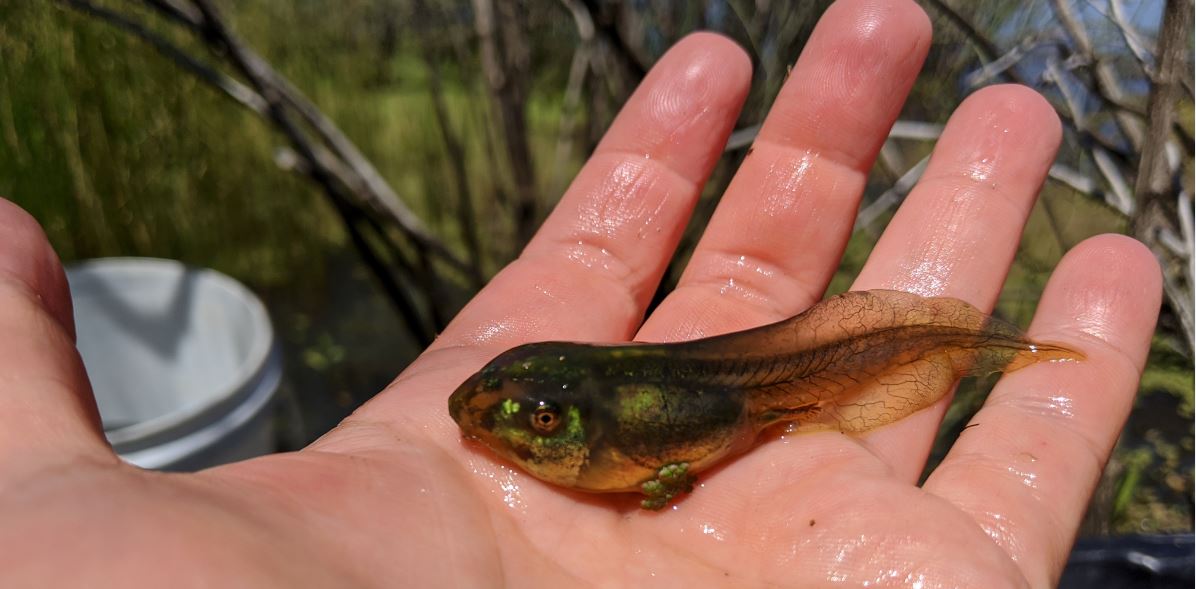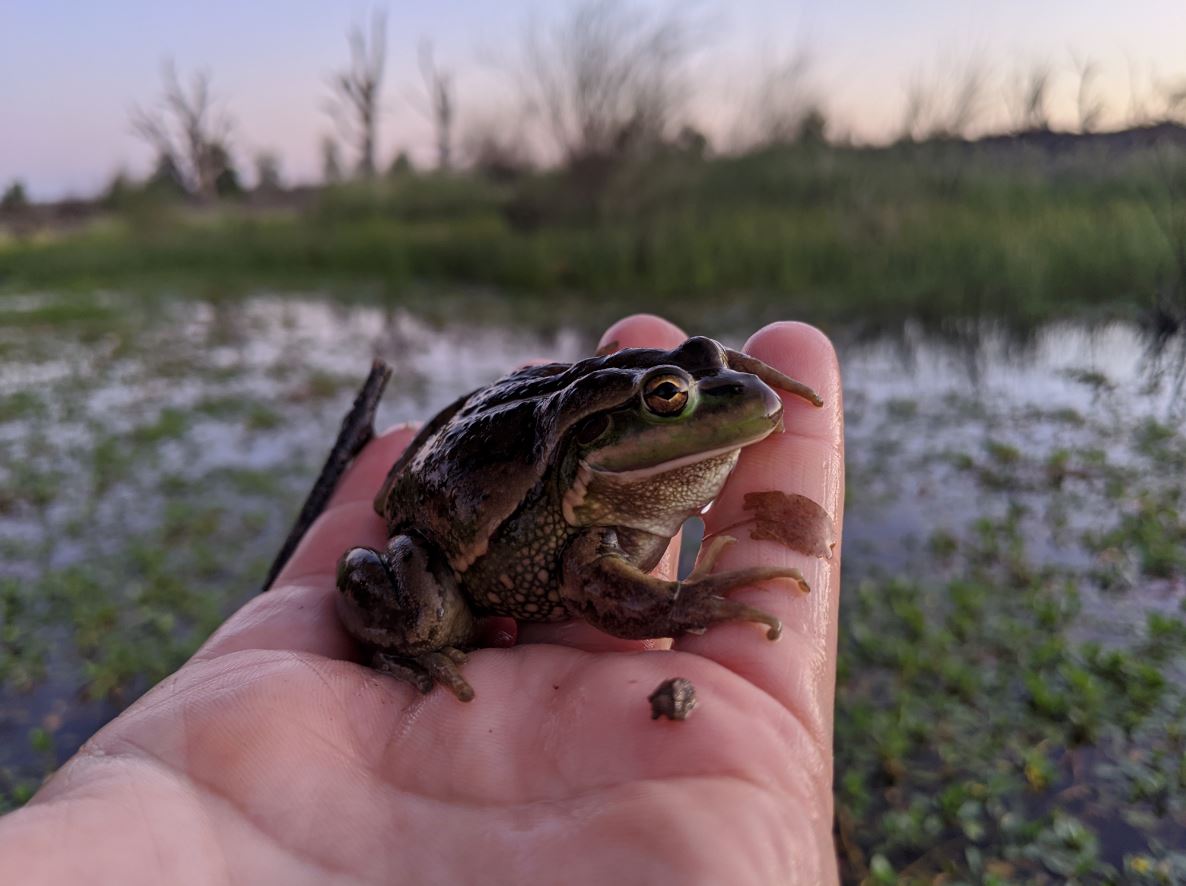
With climate action a theme of Earth Day 2020, a new research paper highlights the plight of some of the most at-risk species – and some promising approaches to save them.
More than birds and mammals, amphibians (frogs, salamander and caecilians) are on the front line of extinction, and this will only get worse as the climate continues to change. This is especially true in Australia where water extraction and landscape modification are placing wetlands and river flows under increasing pressure.
Amphibians breathe (in part) through their skin, so they maintain moist skin surfaces. This sliminess means that most amphibians quickly dry out in dry conditions. Additionally, most amphibian eggs and larvae are fully aquatic and cannot exist without appropriate freshwater habitats.
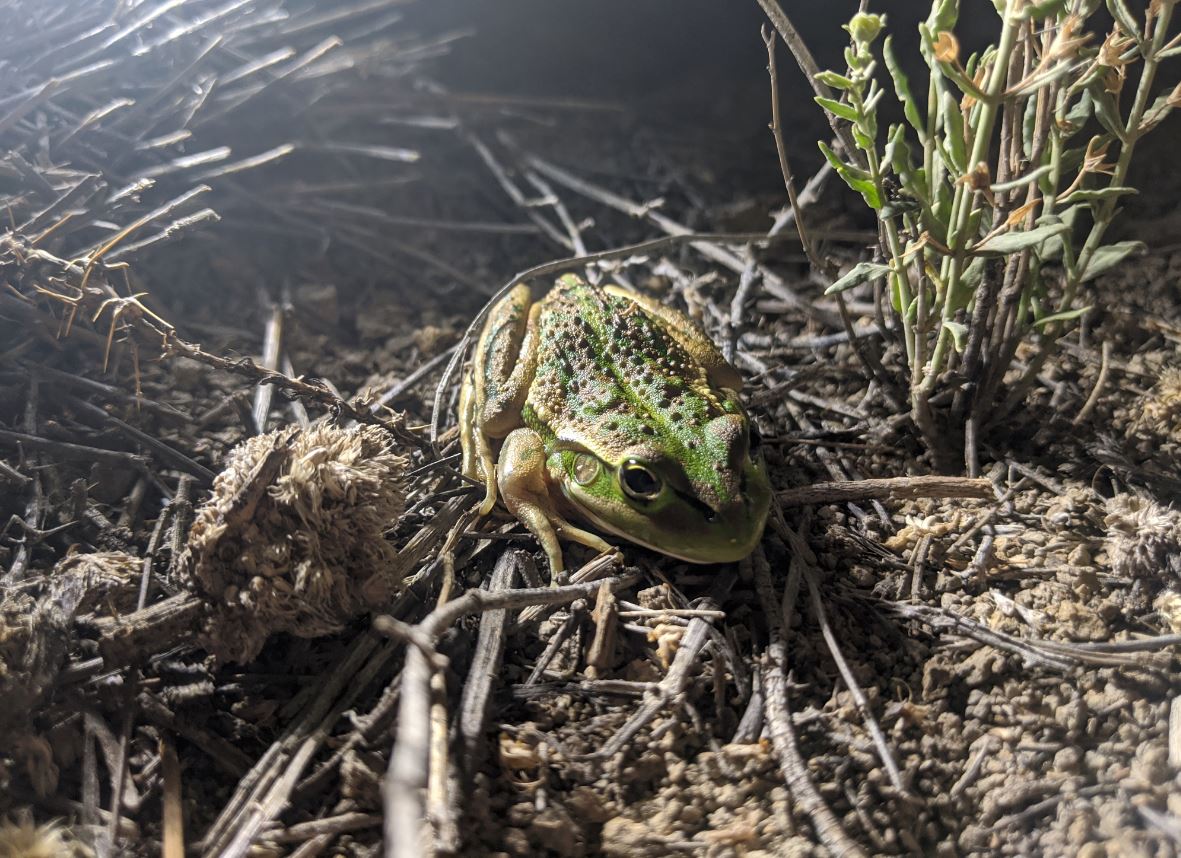
Spotlighting Bell frog in the Riverland. Photo: Kate Mason
“This need for freshwater all too often places them in direct competition with humans,” says Corey Bradshaw, Flinders University Professor of Global Ecology.
“Already about 41% of the species assessed (IUCN 2019) are threatened with extinction, so with continued climate change we have to be smarter about managing water to maintain critical habitats and save our threatened amphibians from extinction,” he says.
“Intelligent manipulation and management of where and how water appears in the landscape will be vital to arrest the declines of amphibians,” says Flinders University freshwater ecologist Rupert Mathwin, the lead author of the review study published in the journal Conservation Biology.
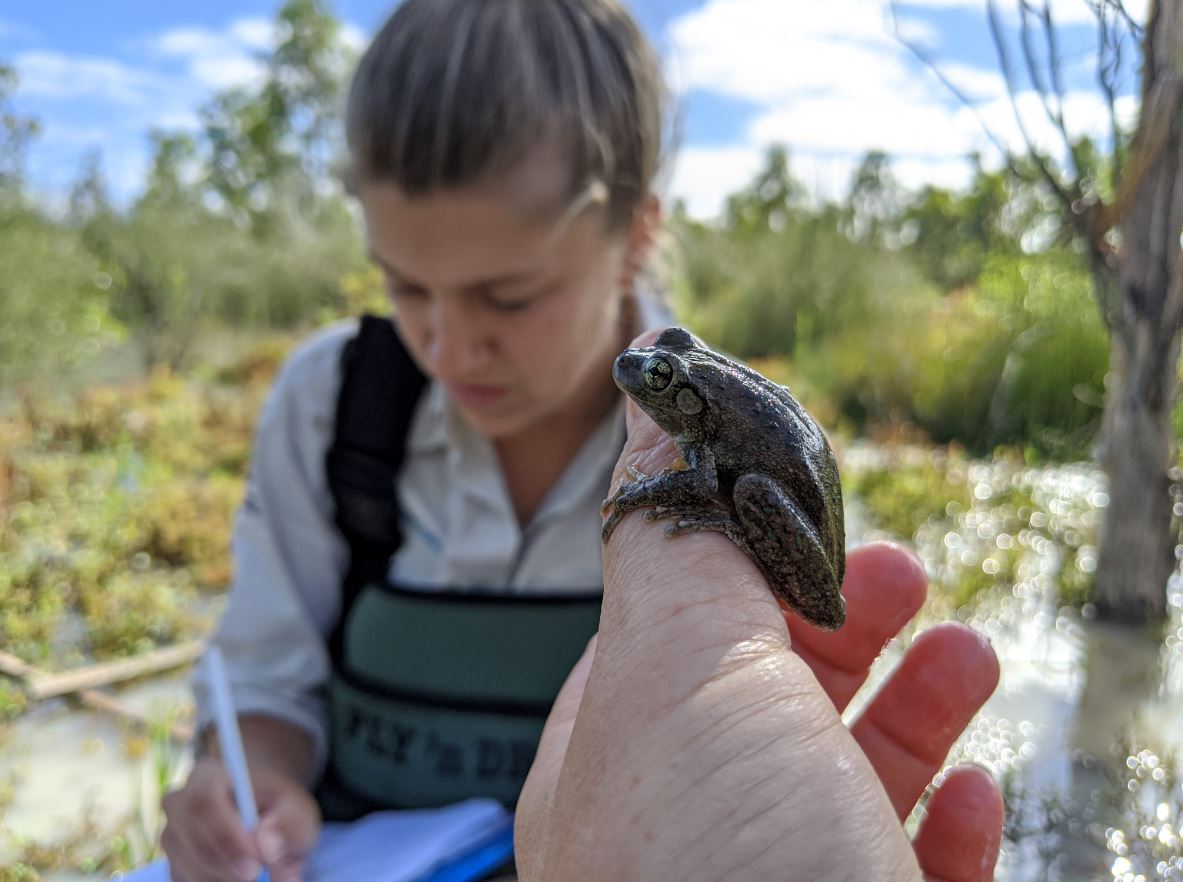
The article found some key pointers for amphibian conservation:
- Extending the time that water is available in temporary pools is a promising approach to amphibian conservation. Excavating the pool to increase depth, lining it with a rubber liner, and pumping water into breeding ponds can avoid population collapse caused by pools that dry too quickly. For short-lived species that only breed once a year, these events can be catastrophic.
- Amphibians are heavily impacted by predators, so restoring natural drying patterns outside of the main breeding times can reduce predation, especially in tadpoles.
- Releasing water from dams along river channels (often termed ‘environmental flow’) can harm amphibians if high-energy water flows scour habitat features and displace larvae, and might favour predators like fish. But pumping water into off-channel wetlands removes fish and can create better habitats for frogs.
- Spraying water into the environment has several potential uses but there are few successful examples for amphibian conservation.
“Sharing our successes and failures is critical to advancing the field and finding more effective ways to save amphibians” says Mr Mathwin, “It is really about getting the message to those who need to hear it.”
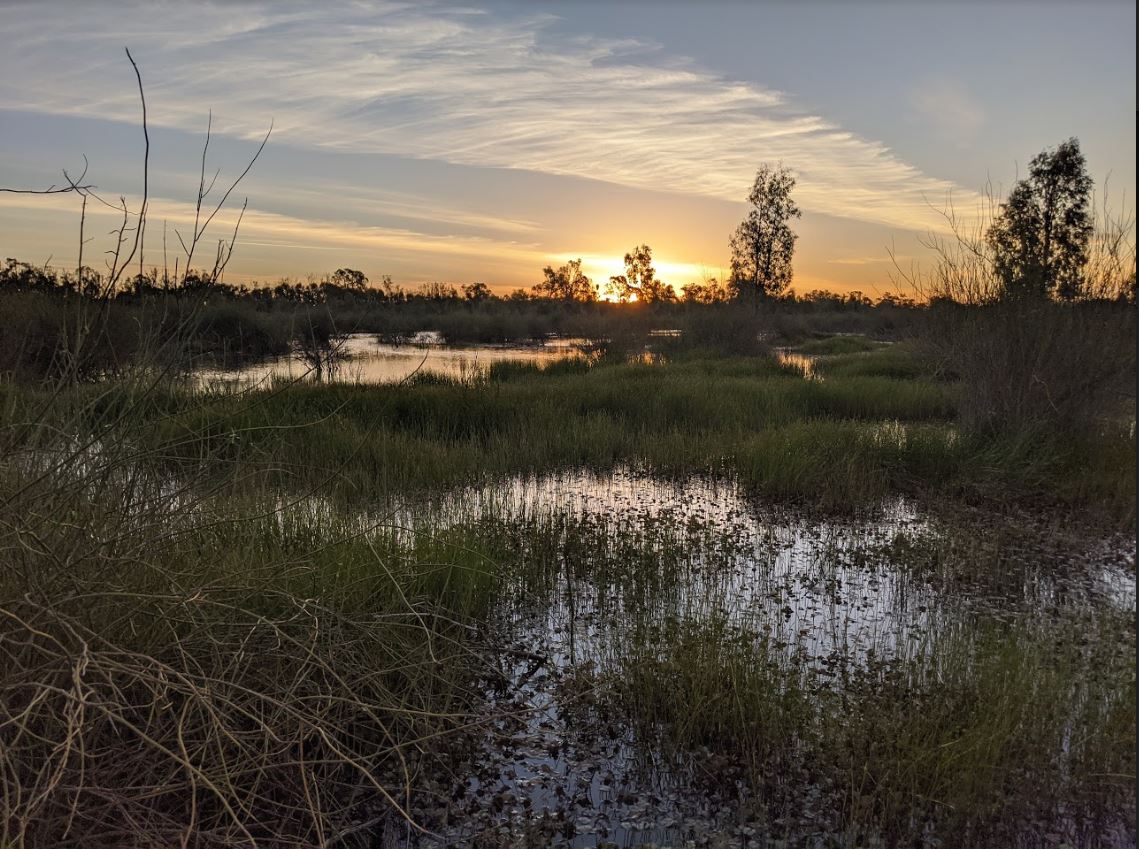
The systematic review, entitled ‘Manipulating water for amphibian conservation’ (March 2020) by R Mathwin, S Wassens, J Young, Q Ye and CJA Bradshaw is available online in Conservation Biology (http://doi.org/10.1111/cobi.13501) DOI: 10.1111/cobi.13501
The 50th anniversary of Earth Day (22 April 2020) comes at a critical time as “climate change represents the biggest challenge to the future of humanity and the life-support systems that make our world habitable” (see earthday.org for events).
